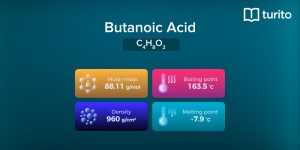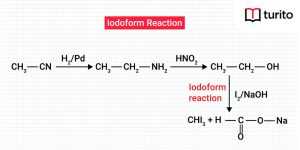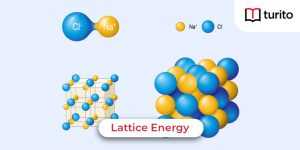Hybridisation
Have you ever wondered why different molecules or compounds show different shapes? Why are the bonds between the central atom and other atoms formed in a certain manner? What is the concept that changes the geometry and spatial arrangement of molecules?
It is critical in arranging different molecules’ shapes, energy, etc. Now, what is hybridisation, and how does it arrange the bonds? This article will answer these questions.
What is Hybridisation?
It is the hypothesis of mixing atomic orbitals to form advanced hybrid orbitals appropriate for describing the bonding properties. It leads to the entirely new shape and orientation of the valence orbitals of an atom.
It is essentially an attempt to predict where the electrons are when there are bonds and lone pairs. It occurs when atomic orbitals mingle to form new atomic orbitals. The advanced orbitals have equal electron capacity as the old ones. The energies and properties of the new and hybridised orbitals are an ‘average’ of the original unhybridised orbitals.
The need to introduce the concept of hybridisation was the finest explanation for the certainty that all of the C-H bonds in molecules such as methane were indistinguishable.
Concept of Hybridisation
Linus Pauling introduced the concept of hybridisation. This concept describes the characteristic dimensional shapes of molecules with more than two atoms like CH4, H2O, NH3, etc. He suggested that the atomic orbitals integrate to form a new set of identical orbitals recognised as hybrid orbitals. Different from pure orbitals, intermixed orbitals are utilised in forming the bond. Such an episode is recognised as hybridisation. This process can be the intermixing of the orbitals of slightly different energies to redistribute them, resulting in the formation of a new set of orbitals of equivalent energies and shapes.
Types of Hybridisation
There are different types of hybridisation involving s, p and d orbitals. The different types are as under:
- sp hybridisation:
- One p and one s orbital blend, forming two sp composite (or hybrid) orbitals.
- They are equivalent and symmetrical hybrid orbitals.
- Each sp hybrid orbitals has equal character, i.e., 50% s-character and 50% p-character.
- The molecules formed are linear in geometry and thus have a bond angle of 180°.
- s-orbital is spherical, and p-orbital is pear-shaped, but the sp hybrid orbital, obtained from the mixing of s and p orbital, is oval-shaped.
- This type of hybridisation is also known as diagonal hybridisation, i.e., spatial arrangement is directed in a straight line in opposite directions.
- Example: BeCl2, BeF2, C2H2, BeH2, etc.

- sp2 hybridization:
- One s and two p orbitals blend, forming three sp2 fused (or hybrid) orbitals.
- It is also called trigonal hybridisation.
- They have the same shape and same energy.
- They lie in one plane.
- Each sp2 hybrid orbital has 33% s-character and 66% p-character.
- The molecules formed are triangular planar in geometry and thus have a bond angle of 120°.
- sp2 hybrid orbital is obtained from mixing s and two p orbitals. Hence, it has a trigonal spatial arrangement.
- As the contribution of the p-orbital is more than the s-orbital, the shape of sp2 hybrid orbitals, therefore, tends more towards a pear.
- Example: BeH3, BeF3, etc., and alkenes

- sp3 hybridisation:
- One s and three p orbitals intermix to form four sp3 composite (or hybrid) orbitals.
- It is also called tetrahedral hybridisation.
- sp3 hybrid orbitals are equivalent and symmetrical hybrid orbitals.
- These have the same shape and same energy.
- Each sp3 hybrid orbital has one-fourth s-character and three-fourth p-character, i.e., 25% s-character and 75% p-character.
- The molecules formed are tetrahedrons in geometry and thus have a bond angle of 109.5°. It is also called a tetrahedral angle.
- Example: H2O, H,2S, C2H6, SiCl4, CH4, etc.

- sp3d hybridisation:
- One s, three p, and one d orbital intermix and form five sp3d intermix (or hybrid) orbitals.
- It is also called trigonal bipyramidal hybridisation.
- These have the same shape and same energy.
- The molecules formed are trigonal bipyramidal in geometry and thus have a bond angle of 120° in the horizontal plane and 90° in the vertical plane.
- They are directed toward the five corners of a regular pentagonal bipyramid, i.e., the arrangement of the five hybrid orbitals in space is pentagonal bipyramidal.
- Example: PCl5, SbF5, ClF3, XeF2, etc.

- sp3d2 hybridisation:
- One s, two d, and three p orbitals intermix to form six sp3d2hybrid orbitals.
- They have the same shape and same energy.
- The molecules formed are octahedrons in geometry and thus have a bond angle of 90°.
- They are directed toward the six corners of a regular (symmetrical) octahedron, i.e., the octahedral arrangement of the six hybrid orbitals in space.
- Example: SF6, SeF6, IF5, XeF4, etc.

- sp3d3 hybridisation:
- One s, three p, and three-d orbitals intermix to form six sp3d3 hybrid orbitals.
- They have the same shape and same energy.
- They are directed toward the seven corners of a regular (symmetrical) pentagonal bipyramidal, i.e., the arrangement of seven hybrid orbitals in space is the pentagonal bipyramidal.
- The molecules formed are trigonal bipyramidal in geometry and thus have a bond angle of 120° in the horizontal plane and 90° in the vertical plane.
- The sum of 𝜎-bond pairs and lone pairs in the species showing sp3d3 hybridisation is always equal to 7.
- Example: IF7, XeF6, ReF7, etc.

The different types of hybridisations in a chart are given below:
| Molecule Type | Number of electron pairs | Geometry | Bond Angle | Hybridisation | Example |
| AB2 | 2 | Linear | 180° | sp | BeCl2 |
| AB3 | 3 | Trigonal planar | 120° | sp2 | BF3 |
| AB4 | 4 | Tetrahedral | 109.5° | sp3 | CH4 |
| AB5 | 5 | Trigonal bipyramidal | 90°, 120° | sp3d | PCl5 |
| AB6 | 6 | Octahedral | 90° | sp3d2 | SF6 |
| AB2E | 3 | Bent | 120° (119°) | sp2 | SO2 |
| AB3E | 4 | Trigonal bipyramidal | 109.5° (107.5°) | sp3 | NH3 |
| AB2E2 | 4 | Bent | 109.5° (104.5°) | sp3 | H2O |
| AB4E | 5 | See-saw | 180°, 120° (173.1°, 101.6°) | sp3d | SF4 |
| AB3E2 | 5 | T-shape | 90°, 180° (87.5°, <180°) | sp3d | ClF3 |
| AB2E3 | 5 | Linear | 180° | sp3d | XeF2 |
| AB5E | 6 | Square pyramidal | 90° (84.8°) | sp3d2 | BrF5 |
| AB4E2 | 6 | Square planar | 90° | sp3d2 | XeF4 |
| AB7 | 7 | Pentagonal bipyramidal | 90°, 180° | sp3d3 | XeF6 |
Need of Hybridisation
Let’s take, for example, the BeCl2 molecule to understand the need for hybridisation.
The ground state configuration of Beryllium (Be) is 1s2 2s2.
So, to form two bonds, it gets into an excited state,
Be- 1s2 2s1 2p1
In this state, Be can form bonds with two Cl, but the bonds would not be equal (identical). It is because one bond will consist of the spherical 2s orbital of Be overlapping with a dumb-bell-shaped 3p orbital of Cl. In contrast, the other bond will consist of the dumb-bell-shaped 2p orbital of Be overlapping with the dumb-bell-shaped orbital of Cl.
But the actual shape of the BeCl2molecule is linear and equal. It means the bond lengths and energies for both Be-Cl bonds are identical. This contradiction was resolved by hybridisation theory. Therefore, it raises the need for hybridisation in molecules.
Conclusion
From the above discussion, you are now well-versed with the questions like what is hybridisation, different types, charts, etc. It is a very convenient way to explain chemical bonding between different atoms.
In short, it is the phenomenon of mixing two or more degenerate atomic orbitals to form a new set of orbitals. And to remember different types of hybridisations, and a chart is the best possible way.
Frequently Asked Questions
Q1. What are the salient features of hybridisation?
Answer: The main features of hybridisation are as under:
- The number of hybrid orbitals formed equals the total number of pure atomic orbitals that get hybridised.
- Atomic orbitals can mix effectively to give hybrid orbitals only when they are of the almost same energy and same symmetry.
- The hybrid orbitals are more successful in forming stable 𝜎-bonds than the pure atomic orbitals (𝜋-bond).
- These hybrid orbitals are governed in space in specific directions around the central atom. This arrangement stabilised the geometry by minimising the repulsion between electron pairs. Therefore, the type of hybridisation indicates the spatial orientation of the molecules.
- Only the 𝜎-bond pairs and lone pairs of electrons decide the molecule’s shape. 𝜋-bond does not participate in it.
Q2. What are vital conditions for hybridisation?
Answer: The vital conditions for hybridisation are:
- The orbitals present in the atom’s valence shell are hybridised.
- The orbitals that encounter hybridisation should have virtually equal energy.
- The advancement of electrons is not an essential condition before hybridisation.
- Only half-filled orbitals don’t need to participate in hybridisation. In some cases, even filled valence shell orbitals take part in it.
Q3. What are the factors that decide the hybridisation of a molecule?
Answer: Three key factors decide the hybridisation of a molecule. These are:
- The number of 𝜎-bonds: 𝜎-bonds play an important role in the shape formation of a molecule. These bonds are strong than 𝜋-bonds.
- The number of lone pairs: Lone pairs decide the spatial orientation of a molecule. For example, in the case of H2O, the hybridisation is sp3. But due to lp-lp repulsion, the bond angle reduced from 109.5° to 104.5°.
- 𝜋-bonds arise from unhybridised orbitals.
Q4 What is Orbital hybridisation?
Answer: According to the valence bond theory, orbital hybridization is the process of combining atomic orbitals to create new hybrid orbitals that are ideal for pairing electrons to form chemical bonds.

Relevant Articles
Butanoic Acid – Structure, Properties, Uses
Butanoic Acid The carboxylic acid, butanoic acid, has the structural …
Butanoic Acid – Structure, Properties, Uses Read More »
Read More >>What is Iodoform? Characteristics and Uses
Iodoform The formula for Iodoform is CHI3. It is biotic …
What is Iodoform? Characteristics and Uses Read More »
Read More >>Lattice Energy – Explanation, Factors & Formulas
Lattice Energy Lattice energy evaluates the intensity of the ionic …
Lattice Energy – Explanation, Factors & Formulas Read More »
Read More >>Lead Acetate – Definition, Properties, Uses
Lead Acetate Have you ever licked lipstick when you sketch …
Lead Acetate – Definition, Properties, Uses Read More »
Read More >>




















Comments: